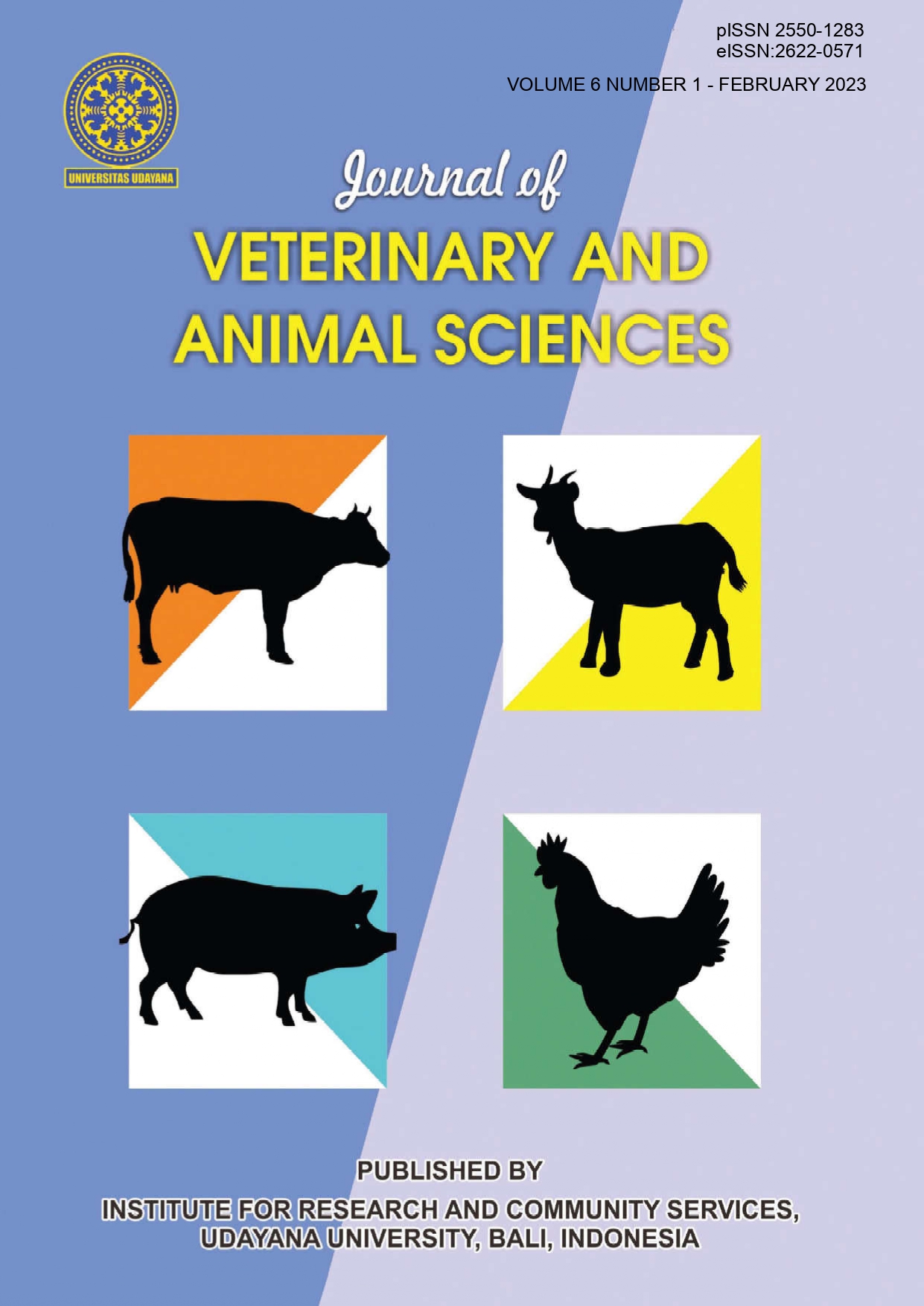Quality of Pork on Electrical Stunning and Non-Stunning Reviewing from Water Holding Capacity, Wetted Area and Cooking Loss
Abstract
Pigs cannot be separated from the lives of most Indonesians, especially in Bali. Pork will always be a superior commodity among the public. Meat quality is a major factor for consumers to ensure their safety. The method of slaughter plays an important role in determining the quality of the meat, whether it is using the stunning technique and the non-stunning technique. The purpose of this study was to determine the quality of pork slaughtered using electrical stunning and non-stunning techniques by testing the water holding capacity, wetted area and cooking loss parameters. This study used 40 samples of pork hamstrings (musculus biceps femoris), weighing ±50 g/head taken from 40 pigs in two different slaughterhouses in the Darmasaba area. The results showed that the difference in slaughtering techniques did not have a significant effect (P > 0.05) on the value of water holding capacity and cooking loss of pork, while on the value of the wet area, the difference in slaughtering techniques had a significant effect (P < 0.05). It is necessary to conduct a study with a more detailed unit of measurement and a larger number of samples.











